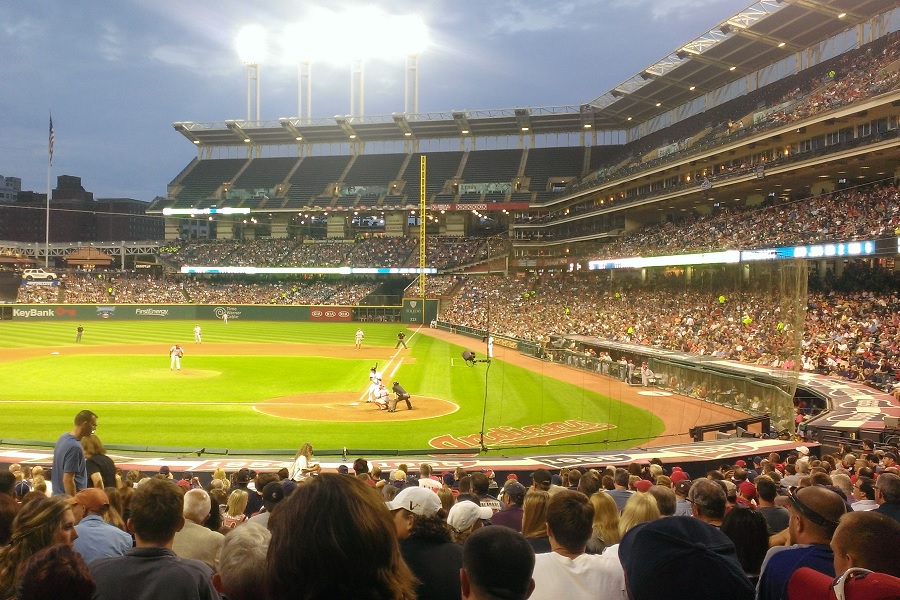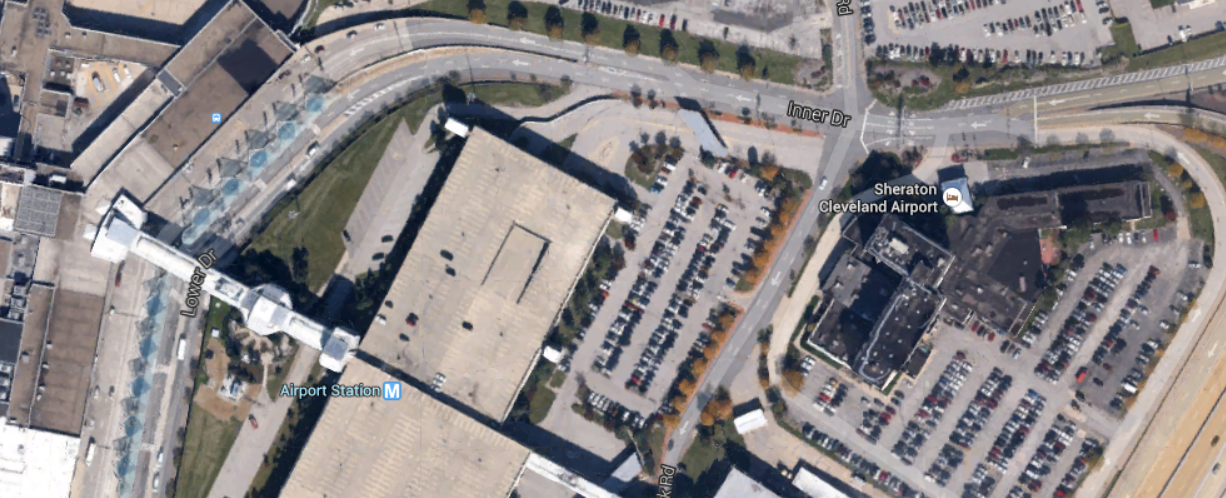Crain's has a good summary today of new moderate-alcohol beers that craft brewers in the area are making:
In June, Temperance Beer Co. released the first batch of Greenwood Beach Blonde, a creamy ale that checks in at 4 percent alcohol. The beer became the Evanston brewery's second-most popular, and the first batch sold out so quickly at Temperance's taproom that owner Josh Gilbert decided to broaden his focus: When Temperance made a second batch last week, it was immediately canned and sent to distributors.
The session-beer trend isn't limited to upstart microbreweries. Some of the largest craft breweries—including Founders Brewing Co. of Grand Rapids, Michigan; Deschutes Brewery Inc. of Bend, Oregon; and Lagunitas Brewing Co. of Petaluma, California, whose Midwest and East Coast operations are based in Douglas Park—now are making ales with less than 5 percent alcohol content year-round.
Premier local breweries such as 3 Floyds Brewing Co. of Munster, Indiana, and Two Brothers Brewing Co. in Warrenville are marketing session brews, and this summer Half Acre Beer Co. in Chicago's North Center neighborhood collaborated on a session ale with a brewery in Maine. The king of lagers, Anheuser-Busch InBev NV, is filling out its line of ballpark beers with Endless IPA from Goose Island, a limited-run ale with a 5 percent alcohol content.
I've had a couple of these, including Lagunitas All-Day IPA and even the InBev Endless IPA. I've also written about English craft beers that fall into the American "session" category because most English beers are 5% or so anyway. Even my go-to Belhaven Twisted Thistle is only 5.3% ABV.
I always knew the hop-and-high-alcohol fetish beers would give way in time to much more drinkable brews. I'm glad the market has responded so quickly and affirmatively.
As a city boy, the country occasionally surprises me. The Cleveland client has an office well outside Cleveland in rural Geauga County where we've spent some time over the last few weeks. One of the senior guys there hunts. And this is how I got to taste fresh, smoked pheasant last week—complete with a warning about birdshot:

He thinks we should all use GMT instead:
[W]ithin a given time zone, the point of a common time is not to force everyone to do everything at the same time. It's to allow us to communicate unambiguously with each other about when we are doing things.
If the whole world used a single GMT-based time, schedules would still vary. In general most people would sleep when it's dark out and work when it's light out. So at 23:00, most of London would be at home or in bed and most of Los Angeles would be at the office. But of course London's bartenders would probably be at work while some shift workers in LA would be grabbing a nap. The difference from today is that if you were putting together a London-LA conference call at 21:00 there'd be only one possible interpretation of the proposal. A flight that leaves New York at 14:00 and lands in Paris at 20:00 is a six-hour flight, with no need to keep track of time zones. If your appointment is in El Paso at 11:30 you don't need to remember that it's in a different time zone than the rest of Texas.
Sigh.
It's even easier to get people to use International System measurements than to get them to understand the arbitrariness of the clock, but let's unpack just one thing Yglesias seems to have missed: the date.
Imagine you actually can get people in Los Angeles to use UTC. Working hours are 16:00 to 24:00. School starts at 15:45 (instead of ending then). In the summer, the sun rises at 12:30 and sets at 02:00.
Wait, what? The sun sets at 2am? So...you come home on a different day? That makes no sense to most people.
Yes, in a world where people are unwilling to give up their 128-ounce gallons and 36-inch yards in favor of 1000-milliliter liters and 100-centimeter meters, a world where ice freezing at 32 and boiling at 212 makes more sense than freezing at 0 and boiling at 100, a world where Paul Ryan is thought to be a serious person, we're not moving away from the day changing while most people are asleep.
And don't even get me started on the difference between GMT and UTC.
From yesterday's game—with its 22,000 paid attendance:

Progressive Field holds 43,500 people (compared with Wrigley's 41,100) and yet has worse attendance this year. The Cubs are averaging 32,000 fans per game, with no game coming in under 25,000 paid; Cleveland is getting 18,600 per game with some early spring games pulling in fewer than 10,000. This, despite the Cubs holding onto last place like they're afraid to fall off the chart, and the Indians actually being the wild card at the moment.
Progressive Field isn't a bad ballpark. The Indians aren't a bad team. I guess Cleveland just isn't a huge baseball town.
Score one for the client. We got to go to tonight's Indians game at Progressive Field. Nice seats, too.
Sadly, the Reds won 9-2, and we got rained on. And the Indians kind of played like Cubs.
Nice client, though.
One hundred years ago today, just a few kilometers from where I'm now sitting, Cleveland installed the first electric traffic signal at corner of Euclid and East 105th:
Various competing claims exist as to who was responsible for the world's first traffic signal. A device installed in London in 1868 featured two semaphore arms that extended horizontally to signal "stop" and at a 45-degree angle to signal "caution." In 1912, a Salt Lake City, Utah, police officer named Lester Wire mounted a handmade wooden box with colored red and green lights on a pole, with the wires attached to overhead trolley and light wires. Most prominently, the inventor Garrett Morgan has been given credit for having invented the traffic signal based on his T-shaped design, patented in 1923 and later reportedly sold to General Electric.
Despite Morgan's greater visibility, the system installed in Cleveland on August 5, 1914, is widely regarded as the first electric traffic signal. Based on a design by James Hoge, who received U.S. patent 1,251,666 for his "Municipal Traffic Control System" in 1918, it consisted of four pairs of red and green lights that served as stop-go indicators, each mounted on a corner post. Wired to a manually operated switch inside a control booth, the system was configured so that conflicting signals were impossible. According to an article in The Motorist, published by the Cleveland Automobile Club in August 1914: "This system is, perhaps, destined to revolutionize the handling of traffic in congested city streets and should be seriously considered by traffic committees for general adoption."
Only 100 years later, the traffic lights have minds of their own.
Two housekeeping items.
Number 1: Walking to the airport. I finally found a path through the parking garage that looks intentionally constructed. It took me about a city block out of my way, but also prevented me getting run over by cars.
Number 2: Suburbistan dinner options. Thanks in part to Yelp, I wound up at Taza Lebanese Grill in Woodmere, Ohio. I'll write a Yelp review later this week. In sum: very good hummus, tasty kifteh, and bold-as-brass sparrows that actually took pita right off my table. Because honey sparrow don't care.
We put in ridiculous hours last week on my Cleveland project so that today we only had to polish and sand a few spots to feel like we're in a good place for a client presentation first thing tomorrow. So tonight my PM is heading to a workout class and I'm having a good dinner.
To that end, though: what in the world did people do before Yelp?
I'll tell you what we did: we had lots of bad meals while traveling. Even out here in the buttskirts of Cleveland, Yelp has located at least three restaurants worth trying. And I will.
Meanwhile, walking distance from my hotel—that means, within this shopping center, because I'm surrounded on four sides by unwalkable roads—are Chipotle, Abuelos, Chik-fil-A, and Olive Garden. So: thank you, Yelp. I mean it.
From my hotel room right now I can see the A-concourse at Cleveland Hopkins Airport about 500 m away. Between here and there is a parking lot and the terminal access road. The setup isn't fundamentally different from the location of the O'Hare Hilton, except a few trees and traffic levels. Oh, and the walkway.
The O'Hare hotel connects directly to all three terminals via underground walkway as well as surface paths through or around the parking structure. In other words, a traveler can walk from his plane to the O'Hare Hilton directly, without taking his life into his hands.
Not so here. Look (click for full size):

If you walk along the terminal access road, you run out of sidewalk by the first curve. Somehow there's a path through the parking structure, but again, once you get to the edge of the parking lot southeast of the structure, you're climbing through sod and ground cover to get to the hotel's ring road.
Still, I did it last night, and from my gate to the hotel took 17 minutes. Last time, when I waited for the hotel shuttle bus, it took twice as long. Fortunately it didn't rain either time, but if it had rained, waiting for the shuttle bus would have been damper.
Now I've got to catch the rental car shuttle, which picks up back at the terminal, so I'll have to pick my way across the parking lot and parking structure until I find a way though to the pick-up spot. Because no one wanted to build a sidewalk to bridge the one-block chasm between the hotel and the airport.
Related: NPR reported this morning that our food intake hasn't changed in 10 years; we're all getting fat because we don't walk enough.
Keep your pants on. I'm referring to the London Underground, which last week got "journalists" to copy and paste a story they ran five years ago. It turns out, the Tube is too hot:
It’s not fair to compare London’s cramped commuters to cattle; right now, livestock actually get the better deal. As temperatures in the U.K.’s capital push towards 32°C for the second week running, heat levels in London’s Tube and bus system have now risen above the EU limit at which it is legal to transport cows, sheep, and pigs. The highest recorded temperature on the network so far this year is 35°C, 5°C above the permissible 30°C for livestock.
I thought that sounded familiar. For comparison, here's the story from August 2009:
A map which reveals the hottest spots on London's underground system has been revealed to commuters.
The map of zones 1 and 2 shows temperatures over above 35°C have been recorded in some areas - making the trains officially unfit for transporting cattle.
The Central line had some of the worst spots, while the Bakerloo line also felt the heat when the map was compiled.
It turns out, I was in London in August 2009, and I remember really hating the temperature as the Circle Line got round to Tower Hill. Glad to see the city have kept some traditions going.